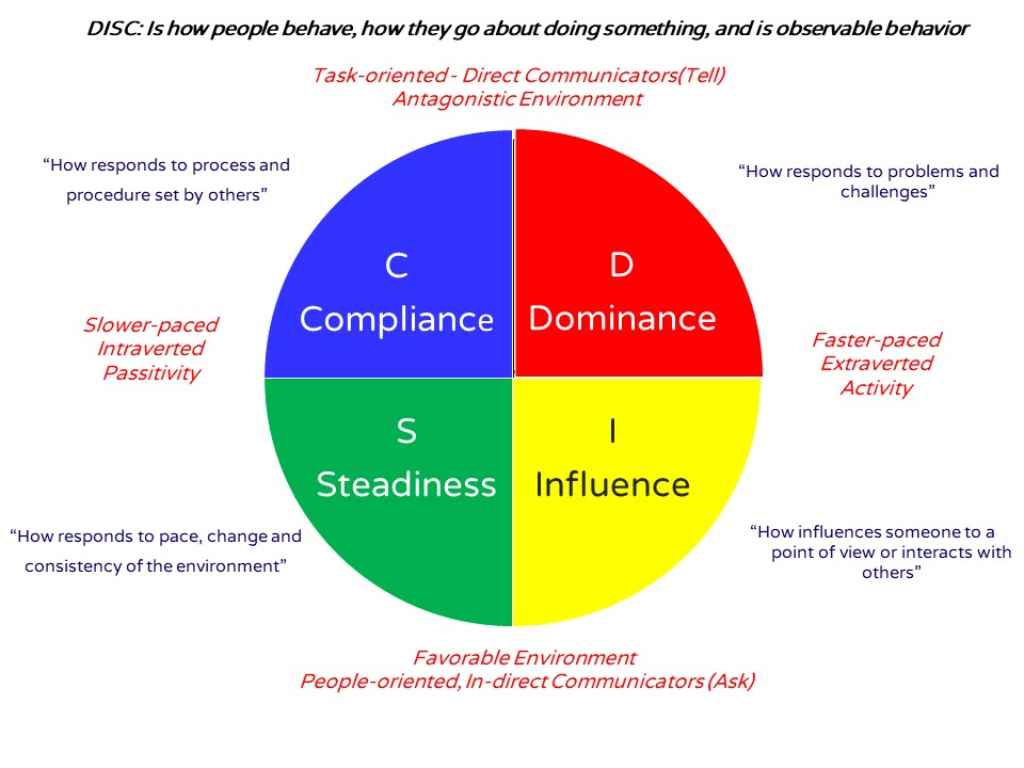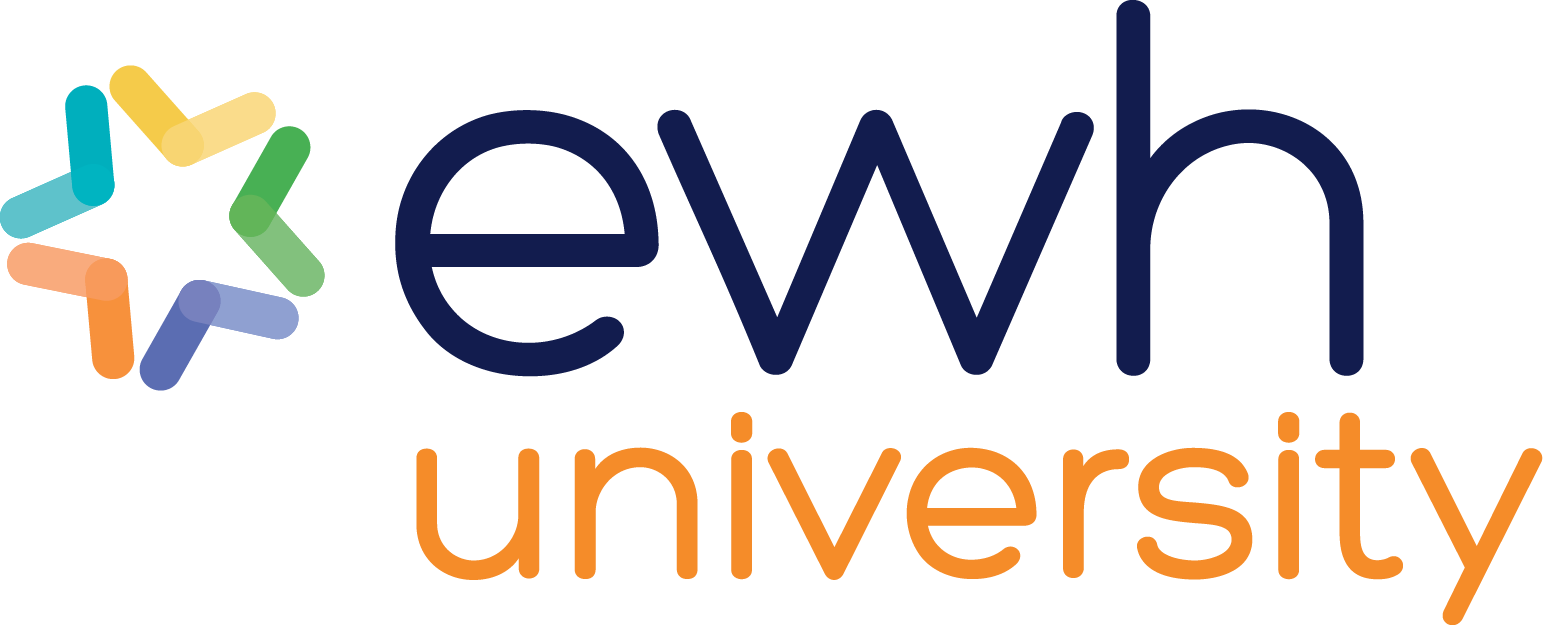Success in anything requires skills, tools, and resourcefulness to learn and utilize those skills and tools. Leading yourself and your team to understand what numbers your team needs to hit requires knowing how to influence yourself and others to take action consistently, and in a way that produces the desired and needed results.
To influence ourselves and others, we must first know what is already influencing us. This empowers us to better understand and appreciate others, meet others where they are at, and adapt our communication and leadership, thereby enhancing our relationships. One of the most powerful tools in work and in life we can use to understand ourselves and others is “The DISC Behavioral Model”.
In this article we will explore DISC and briefly lay the runway for how it can help make you, others, and your results even better! We also encourage you to check out the assessment for yourself (please contact us). Our Leadership Essentials or Team and Hiring Essentials classes are workshops to begin to learn more about DISC. By starting with DISC, we can expand our understanding and appreciation of people, similar and different from us. This immediately shifts our communication knowing we communicating from a place of understanding and not anger, resentment, or judgment.
We’ll show you the tools to better understand your people, just like there are tools to better understand your numbers. So, you no longer must fear something (your numbers) or someone you do not understand. It’s like when we receive a financial report on how our business is performing and where it is at. It serves as the platform for a discussion of what is great, what could be improved, or just how a business has manuals to better understand how it operates. DISC self-assessment tools exist to help individuals and teams better understand themselves and others, and serve as a pathway to start a conversation to further understanding and appreciation.
It is crazy to try to understand a business without a tool like a financial statement. Trying to understand ourselves without some references for self-discovery is just as difficult. Trying to consistently hire the right fit without a self-assessment tool like this in your hiring process will have challenges that can show up with a lack of understanding of what a great fit for the role is. The same outcome results with understanding relationships and key team dynamics, or conflict. Understanding and using tools like this can help us understand what is great about us, so we can bring out our greatness even more. Empowering us and understanding how we can all shine and win in our own unique way.
How can DISC Empower You, Others, and Your Team better?
DISC is a valuable tool to…
- Better understand yourself and others
- How to best lead, inspire, manage, and communicate with others
- Understanding someone’s natural potential, gifts, and strengths (not learned behavior)
- Understand where someone’s value is, and where they are most valuable
- How to best align that potential with a role, job, career, passion, and life
Understanding what each style is measuring will help us begin to understand how this applies to you, the people in your life, and at work.
What is DISC?
DISC is how we do what we do. It is how we talk, walk, drive, write an email, do something, study, decorate, clean, workout, learn, communicate, or lead. It is how we do what we do naturally. While all behavior can be learned, this is how we do, what we naturally do.
It is four different behavioral styles, four different styles of how people go about behaving. Of those four, we each have a primary and a secondary lead style. Meaning one primary that takes the lead, and another secondary that supports our lead in a secondary role.
The first is the style most like them, and the behaviors of that style are easily most accessible to them over all the rest because that is how they are behaviorally wired. The second is the one with the second most accessible behaviors. While we have a primary and secondary lead behavior style, all four still make up the whole unique person that we are. We are a unique blend of all 4.
This helps us understand what type of environment, job, role, value, needs, or where they will best fit to name a few. It can also be important because it helps us understand where we go under stress and how we are perceived by others normally and during times of stress. Giving us further insight into how to become better leaders, communicators, and teammates.
What does DISC measure?
DISC measures these four unique traits:
D – Dominance: How do you respond to problems and challenges.
I – Influence: How do you interact and persuade others to your point of view.
S – Steadiness: How do you react to pace, change, and consistency in the environment.
C – Compliance: How do you respond to rules and procedures set by others?
D – Dominance: How do you respond to problems and challenges
D stands for dominance. Other keywords you could use to describe D energy starting with the letter D: Driver, Decisive, Direct or Doer, Dominate, Dominator, Determined.
People with more D energy will naturally want to be assertive and address problems. Naturally wanting challenges to solve, fix and resolve them. They metaphorically and literally can be the ones running into and putting out the fires along with being able to attack problems and challenges. They are naturally assertive and even perceived as aggressive by some, with this head-on approach to solving problems. Dealing with them head-on and directly, not afraid to rock the boat even if needed.
People with less D energy are more cautious, risk-averse in their approach to solving problems to challenges. They are not by nature direct; in fact, they are more indirect. They even try working around or avoiding the problem, challenge, or conflict all together instead of solving it, going through it, and addressing it head-on. They will not want to rock the boat.
I – Influence: How you interact and persuade your point of view.
I stands for influence. Other keywords you could use to describe I energy starting with an I could be: Influence, Interesting, Intriguing, Inciting, Instigator.
People with more I energy will naturally seek out people to interact with, have fun with, connect with, bring in and persuade. They naturally influence you through their optimism, emotional approach, warmth, openness, and trust.
People with less I energy will not naturally seek out people. They are perfectly fine being alone and do not need the same level of people contact. They will naturally influence you through their skepticism, pessimism, or more logical approach.
S – Steadiness: How you react to pace, change, and consistency in the environment
S stands for steadiness. Other keywords you could use to describe S energy: Steadiness, Sociable, Service, Super, Sturdy or Stubborn.
People with more S energy will want to have a more even, milder pace. If MPH were a metaphor, they prefer 30 mph. Once comfortable though, they are happily speeding it up on cruise control. They want consistency in the environment to make sure people are cared for and their needs are met. They seek to avoid change because it is unfamiliar and disrupts the consistency in the environment.
People with less S energy will want to move faster 60, 90, 120 mph if one has a lower S score. They will also seek change, a faster environment, and will not need consistency or familiarity like those with more S energy than less.
C – Compliance: How you respond to rules and procedures set by others.
C stands for compliance. Other keywords you could use to describe C energy: Compliance, Comply, Cautious or Critical to name a few.
Those with more C energy will ask for permission instead of forgiveness. They will be more naturally inclined to follow the rules and procedures set by others without resistance. They understand the importance and find it easier when we comply with the rules and understand why they are important for quality and how we treat each other. The challenge with intense C energy can be that they will feel as though their rules are the right rules. They can resist others’ rules sometimes, especially if it runs counter to their values or beliefs.
Those with less C energy than more will ask for forgiveness, not permission. They will want to set their own rules and procedures, be their own person, be pioneering. They do not necessarily want to break rules but break limitations and barriers of what others thought was possible. They will want to set new standards by breaking the rules of what others thought was possible! That’s why it is not about breaking the rules but breaking the rules!
Below is also a summary of these four styles with this summary wheel identifying 12 key characteristics that make up these styles and energies.

Looking to further strengthen your leadership abilities? Enhance your team communication skills with our Leadership Essentials course! Or schedule a complimentary strategy session to learn more about DISC and Motivators.



